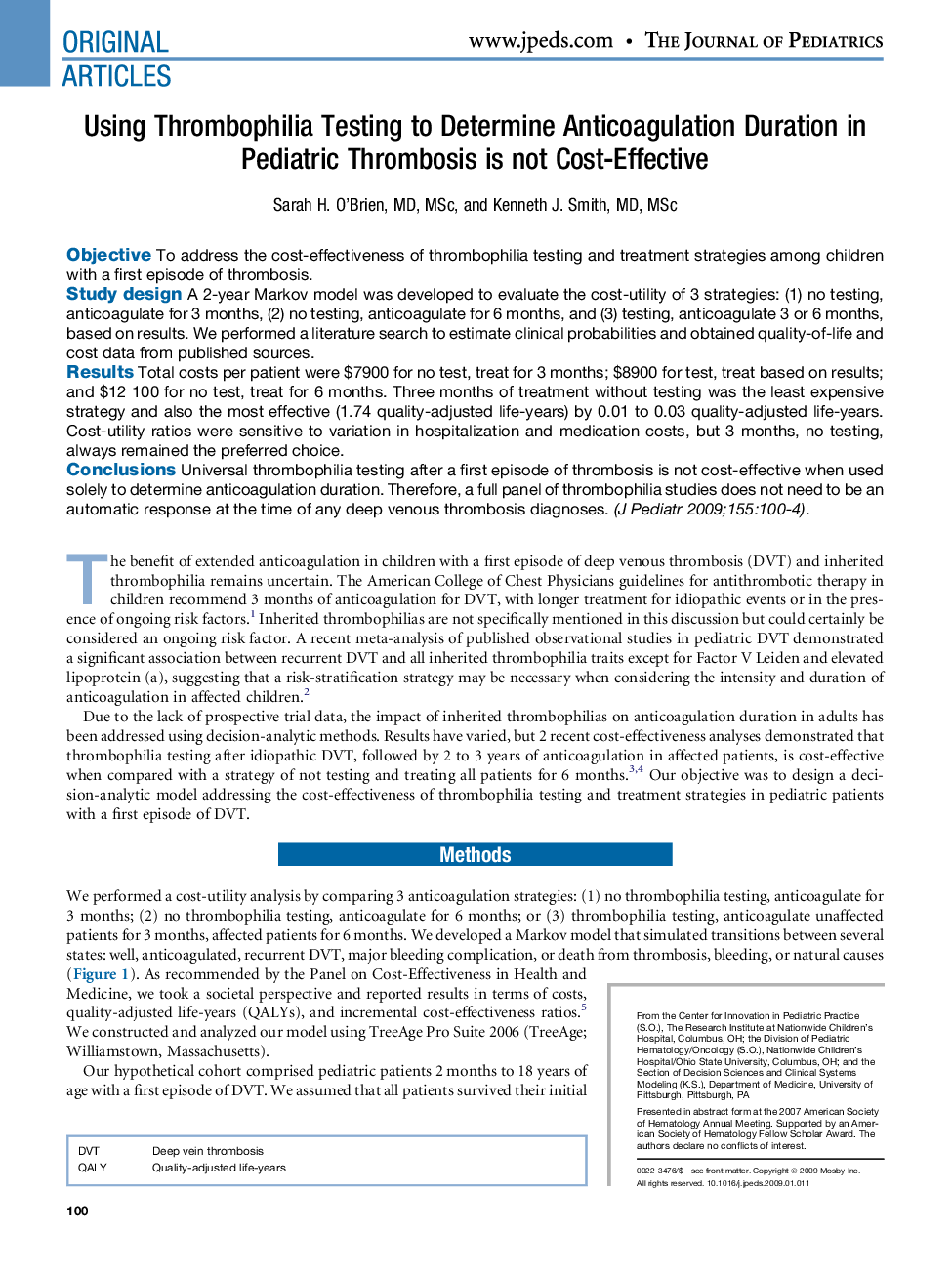| Article ID | Journal | Published Year | Pages | File Type |
|---|---|---|---|---|
| 4166677 | The Journal of Pediatrics | 2009 | 5 Pages |
ObjectiveTo address the cost-effectiveness of thrombophilia testing and treatment strategies among children with a first episode of thrombosis.Study designA 2-year Markov model was developed to evaluate the cost-utility of 3 strategies: (1) no testing, anticoagulate for 3 months, (2) no testing, anticoagulate for 6 months, and (3) testing, anticoagulate 3 or 6 months, based on results. We performed a literature search to estimate clinical probabilities and obtained quality-of-life and cost data from published sources.ResultsTotal costs per patient were $7900 for no test, treat for 3 months; $8900 for test, treat based on results; and $12 100 for no test, treat for 6 months. Three months of treatment without testing was the least expensive strategy and also the most effective (1.74 quality-adjusted life-years) by 0.01 to 0.03 quality-adjusted life-years. Cost-utility ratios were sensitive to variation in hospitalization and medication costs, but 3 months, no testing, always remained the preferred choice.ConclusionsUniversal thrombophilia testing after a first episode of thrombosis is not cost-effective when used solely to determine anticoagulation duration. Therefore, a full panel of thrombophilia studies does not need to be an automatic response at the time of any deep venous thrombosis diagnoses.
